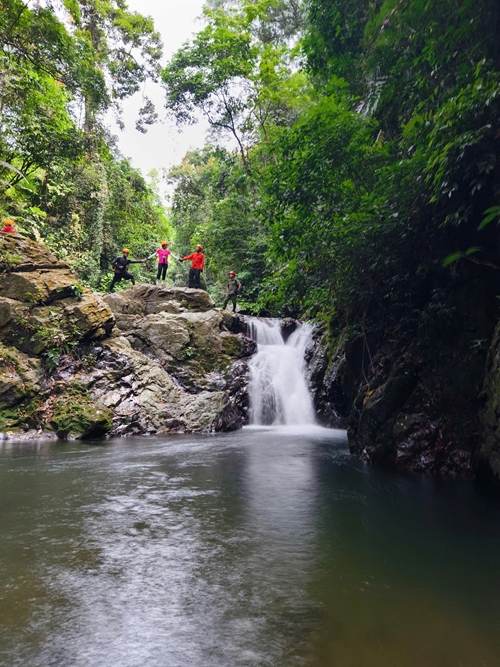July 19, 2025 | 23:02 (GMT+7)
Pristine Duong Cam Waterfall hidden in Truong Son Mountains
PANO - Nestled within the Dong Chau – Khe Nuoc Trong Nature Reserve, the untouched Duong Cam Waterfall has become a magnet for adventurous trekkers and a cool summer escape.
The Duong Cam trekking tour typically lasts either a full day or two days with an overnight stay. For those staying overnight, there's the added experience of living with the Rum Ho villagers, a Bru-Van Kieu ethnic community residing deep within the mountains. After the trek, guests can unwind in traditional stilt houses, savor local cuisine, and gather around a fire under the cool night air.
Below are photos of the pristine beauty of the waterfall.
    |
 |
|
According to Cung, it took him about an hour by car from Dong Hoi ward (formerly Dong Hoi city), traveling along the western branch of the Ho Chi Minh Highway, to reach the starting point. From there, the trekking journey spans over 3km and takes more than two hours on foot to reach the top of the falls. The trail remains largely untouched, with no electricity or mobile signal. |
    |
 |
|
A shallow stream winds through the pristine forest, marking the start of the journey to conquer the waterfall. |
    |
 |
|
According to the photographer, Duong Cam Waterfall has three tiers. Each has its own distinct beauty, offering explorers one surprise after another. At the very first tier lies a crystal-clear pool surrounded by dense forest, with little sunlight managing to penetrate the thick canopy. The air is refreshingly cool, a welcome relief during scorching summer days. |
Source: Vnexpress
Translated by Tran Hoai